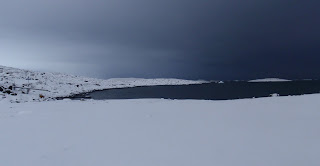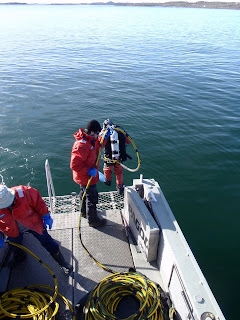




The ice and snow is back. Winter is on the way and summer is well and truely over. We woke up 3 days ago to find the bay in front of station iced over. Didn't last but it won't be long before it starts to cover the whole coast. The next morning everything was covered in snow where there had been none when we went to bed that night. The snow has created a very sudden change to how the station feels and how we work and get around. After the relatively barren rocky landscape of summer it once again looks like Antarctica out there.
















